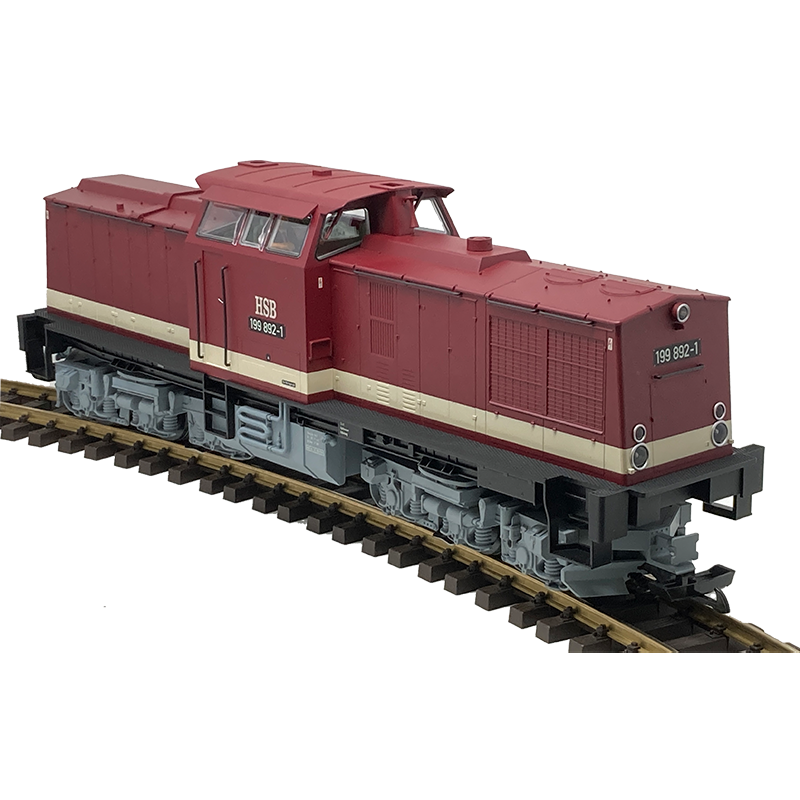

$589.98
New, Limited production gray chassis Piko HSB V BR199 Diesel 199 892-1 Gray Chassis (Harzkamel)
Attractive print variant of the narrow-gauge diesel locomotive BR 199 in the design of the HSB in the Era V.
In the mid-1980s, the Deutsche Reichsbahn, the operation of the narrow-gauge railways in the Harz Mountains to dieselize. For this purpose, 30 locomotives of the Reichsbahn class 112 were to be converted to narrow gauge. The conversion of a total of 10 locomotives took place in the at that time Reichsbahnausbesserungswerk Stendal.
The first locomotive was finally delivered to Wernigerode in November 1988. As early as 1989, regular operation began with two of these converted diesel locomotives, which quickly earned the nickname "Harzkamel" due to their driving behavior. Eight more followed by 1990, so that a total of locomotives 199 861, 863, 870, 871, 872, 874, 879, 891 and 892 were available for operation.
After the political change in the former GDR, however, it was quickly recognized that for tourist reasons the steam operation of the narrow-gauge railways in the Harz Mountains had to be maintained as far as possible. Thus, it remained with the ten diesel locomotives mentioned. These were taken over by HSB in 1993.
Due to the continued use of steam locomotives in passenger train traffic and the use of railcars starting in 1996, there were hardly any possible uses for the diesel locomotives.
In 1998, a new rolling block system was put into operation for freight traffic, which is why two diesel locomotives were equipped with standard-gauge folding buffers (199 872 and 874). Both diesel locomotives also received a radio remote control. 199 861 also received a radio remote control for the shunting service in Wernigerode. Four locomotives (199 863, 870, 879 and 891) were sold to Adtranz in 1998. The remaining three locomotives, which had not received radio remote control, are now parked.
The use of the three operational locomotives is primarily limited to work trains, snow removal operations and shunting service.
Please wait! Content loading.....
